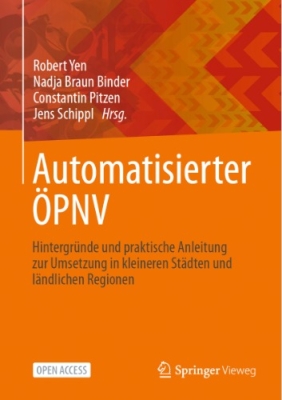How will we manage to develop a mobility that does not destroy our living environment? The story tells of a vision that is promising.
"The future of mobility" is a title we have all read in various forms. Many prophets tour the world and proclaim their prophecy about the future of mobility. In most cases, this prophecy is not so different from what we know, e.g. many cars on wide roads and, in addition, drones populating the air. The difference, admittedly, is the drones and that everything is connected and without drivers or pilots. This mobility is supposed to be more efficient, safer and environmentally friendly because it is electric and automated. The prophets of this vision of mobility come from the industry. They want their products to remain attractive in the future and, if possible, increase sales. This view of the future of mobility is called "market driven". Mobility is actually a synonym for transport.
This is contrasted with the so-called "policy-driven" view of the future of mobility. The approach is ultimately based on the need to solve the public sector's problems in the field of mobility, taking into account the existing and future framework conditions. It is a vision of mobility that politicians in general cannot yet reconcile themselves with, because they perceive it as an imposition on the population. The imposition lies in the need to change our mobility behaviour. In other words, to demand something that many politicians perceive as political suicide.
The main driver of the "policy-driven" view of the future of mobility is anthropogenic climate change. The area where greenhouse gas emissions are still rising is mobility. There is a need to do something about it. E-mobility will only solve the problem to a small extent. Shared mobility, as it is usually understood, only changes the ownership structure, but not the amount of traffic. Mobility must therefore be rethought. It is not the infrastructure or the technical means to get from A to B that are the key to the solution, but the needs of the people that lead them to move from A to B. Our cities have been divided into functional areas since the 1950s. There are commercial areas, residential areas and villa districts, shopping centres, in the city centres there are offices with luxury shops, gastronomy and luxury flats. Citizens commute between these areas. In addition, in the 1960s there was the vision of the "car city". Everything had to be easily accessible by car. Since then, streets and car parks have dominated the sight of our cities.
This is where the "policy-driven" view of the future of mobility comes in. What would happen if we did away with the spatial division of functions and designed cities in such a way that we could satisfy the majority of our needs within walking distance or even without leaving our own homes? What if bicycle paths could take us safely to any place in the city and we could easily travel further distances with our bike on the train? What if walking in the city was possible, away from the streets, shaded by trees, on interesting and stimulating paths and not next to the streets on pavements that were too narrow, and there were areas with seating to linger and exchange ideas? What if there was high-frequency and highly spatially available public transport connecting the city districts? What if our shopping was brought home and there were co-working spaces everywhere, so that many of us would rarely have to travel to company and also not always have to spend time alone in the home office? What if, step by step, the public space of a district or superblock were once again populated by children and adults and not by motorised private transport? It would be a new lifestyle that would make us freer, in which we would have more space for ourselves without the danger of being run over or having to breathe in the exhaust fumes and soot of the many cars. It would be more quality of life for the citizen. Cities like Barcelona or Paris are already working on implementing this vision.
PDF | Die Zukunft der Mobilität – die Vision von einem besseren Leben





